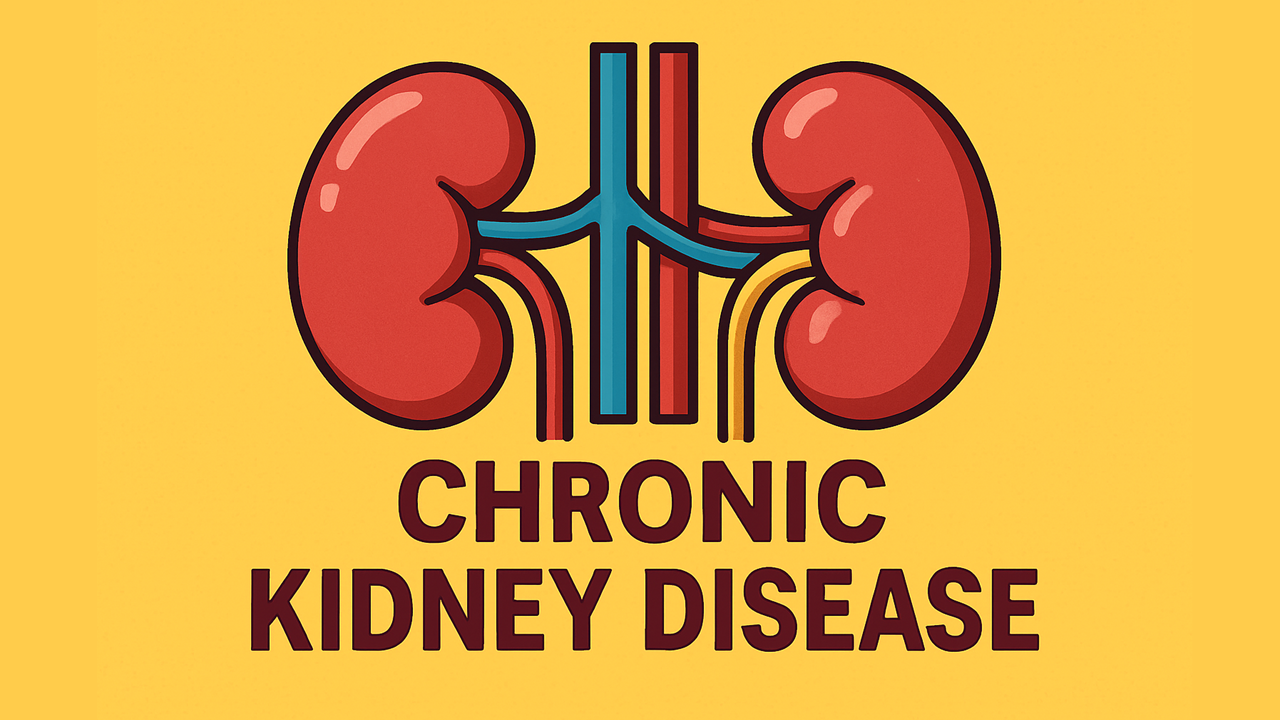Research-Backed Supplements for Treating Cystic Fibrosis
What is Cystic Fibrosis
Cystic fibrosis is an autosomal recessive genetic disorder caused by mutations in the CFTR gene, which encodes an epithelial ion channel responsible for chloride and bicarbonate transport [1]. The most common pathogenic variant, ΔF508, leads to a misfolded CFTR protein that is degraded before it reaches the cell surface, ultimately reducing functional CFTR on epithelial surfaces [1]. This defect causes dehydrated, thick mucus secretions in the airways, pancreas, and other organs [1]. In the lungs, impaired mucociliary clearance and abnormal mucus accumulation promote chronic bacterial infections, most often with Pseudomonas aeruginosa or Staphylococcus aureus, sparking persistent neutrophil-dominated inflammation and progressive airway damage [1]. These processes drive bronchiectasis and declining pulmonary function over time [1]. Outside the respiratory system, CFTR dysfunction in cystic fibrosis causes pancreatic insufficiency, malabsorption of fats and fat-soluble vitamins, liver disease, infertility, and elevated sweat chloride, forming the basis of the diagnostic sweat test [1]. Clinically, CF typically presents in early childhood with failure to thrive, recurrent respiratory infections, and steatorrhea (fatty stools) because of pancreatic enzyme deficiency [1].
Standard treatments in CF target both the defective mucus and its downstream consequences—namely, infection and inflammation [2][3]. Airway clearance measures such as inhaled bronchodilators, hypertonic saline nebulization (7% saline draws water into mucus), and recombinant dornase alfa (DNase) are routinely used to thin secretions and facilitate clearance [2][3]. Chronic suppressive antibiotic therapy is employed to control bacterial colonization, including inhaled tobramycin or aztreonam for Pseudomonas, and oral azithromycin for both its antibacterial and anti-inflammatory properties [2]. Pancreatic enzyme replacement therapy addresses malabsorption, and nutritional interventions correct deficiencies in fat-soluble vitamins A, D, E, and K [3]. In the last decade, CFTR modulators have transformed care by partially restoring CFTR function in eligible genotypes (e.g., ivacaftor, lumacaftor, tezacaftor, elexacaftor), leading to significant gains in lung function and quality of life [1]. The newest triple combination of elexacaftor, tezacaftor, and ivacaftor demonstrates notable efficacy in ΔF508 homozygous or heterozygous patients, slowing disease progression more effectively than earlier regimens [1]. Nevertheless, many individuals still experience progressive lung damage, highlighting the need for adjunctive therapies—including dietary supplements and over-the-counter (OTC) interventions—to further enhance outcomes [1].
Supplements for Cystic Fibrosis
N-Acetylcysteine (NAC)
Mechanism of Action: NAC is a precursor of the antioxidant glutathione, commonly depleted in CF, and acts as a mucolytic agent by breaking disulfide bonds in thick mucus [4][5]. It can bolster intracellular glutathione levels, diminish oxidative stress, and potentially disrupt bacterial biofilms (particularly Pseudomonas) [4][5].
Evidence: A pivotal placebo-controlled trial in about 70 CF patients (ages 9–59) showed that high-dose oral NAC (~2700 mg/day) over 6 months stabilized FEV₁, whereas the placebo group experienced a decline [4]. An earlier trial in 52 CF patients found that lower-dose NAC (~600–800 mg/day) had mixed effects overall but improved lung function in those with more advanced disease, suggesting dose-dependent benefits [5].
Dosage: Clinical protocols typically involve 900 mg NAC two or three times daily, totaling 1800–2700 mg/day [4]. Effervescent NAC tablets dissolved in liquid are widely used in trials, and some work has examined inhaled NAC, though high-dose oral administration is more common in CF studies [4].
Contraindications: NAC is generally well-tolerated, but high doses may cause gastrointestinal upset (nausea, reflux) [4][5]. Inhaled NAC can trigger bronchospasm in rare cases due to its sulfurous odor, particularly in individuals with hyperreactive airways [4].
Notes: NAC supplements are available OTC in many regions. Its dual activity in replenishing glutathione and thinning mucus makes it a promising adjunct therapy, though further research is warranted to confirm clinical benefits on exacerbation rates and long-term outcomes [4][5].
Curcumin (Turmeric Extract)
Mechanism of Action: Curcumin, a polyphenol derived from turmeric, displays antioxidant, anti-inflammatory, and potential CFTR modulatory properties [6][12]. While early preclinical findings suggested curcumin might correct ΔF508 CFTR misfolding, higher concentrations appear necessary than typically achieved in human serum [12]. Curcumin’s more established roles include inhibiting NF-κB, reducing pro-inflammatory cytokine levels, and scavenging free radicals [6][12].
Evidence: A recent randomized controlled trial in children with CF found that nano-curcumin supplementation for 8 weeks led to reduced systemic inflammation (decreases in hs-CRP and IL-6) and modest improvements in lung function and quality of life, albeit with limited between-group differences over a short duration [6]. Earlier studies on curcumin’s CFTR rescue showed limited human efficacy, but its anti-inflammatory effects remain noteworthy [12].
Dosage: The pediatric trial used 80 mg nano-curcumin twice daily, formulated to boost bioavailability [6]. Standard curcumin supplements often contain 500–1000 mg per capsule but have low absorption unless enhanced with piperine or nano-emulsion technology [6].
Contraindications: Curcumin is widely regarded as safe in moderate doses, though gastrointestinal side effects (e.g., nausea, diarrhea) can occur at higher intakes [6]. Patients on anticoagulants should be cautious due to curcumin’s mild anti-platelet activity [6][12].
Notes: While curcumin alone is not a replacement for CFTR modulators, it may act as an immunomodulatory adjunct in CF care [6][12]. The 2023 trial highlights its potential, and longer, larger-scale studies are ongoing to clarify efficacy.
Omega-3 Fatty Acids (DHA/EPA)
Mechanism of Action: Omega-3 polyunsaturated fatty acids, mainly EPA and DHA, exert anti-inflammatory effects by modulating the synthesis of eicosanoids and resolvins that counteract pro-inflammatory mediators derived from omega-6 fatty acids [7]. Because CF patients often exhibit fatty acid imbalances (excess arachidonic acid and low DHA), supplementation aims to correct this pro-inflammatory state [7][8].
Evidence: A 12-month pediatric RCT showed that high-DHA fish oil (~50 mg/kg/day of DHA) improved FEV₁ and lowered pulmonary exacerbations compared to placebo [8]. Conversely, a larger trial of adult and pediatric patients on DHA found no significant differences in FEV₁ or exacerbation rates [7]. Discrepancies may reflect variations in study populations or disease severity.
Dosage: Trials generally provide 2–3 g/day of combined EPA+DHA for adults or ~50 mg/kg/day of DHA in children, ensuring administration with pancreatic enzymes and fat-containing meals to improve absorption [7][8].
Contraindications: Omega-3s are typically safe. Mild platelet inhibition at higher doses warrants caution in individuals on anticoagulants. Fishy aftertaste and reflux are common complaints [7][8].
Notes: Evidence remains mixed, but omega-3 supplementation may be beneficial in subsets of CF patients, particularly children or those with prominent inflammatory markers [7][8]. Further studies are examining synergy with CFTR modulators.
Vitamin D (Cholecalciferol)
Mechanism of Action: Vitamin D is critical for calcium metabolism, immune regulation, and anti-inflammatory responses [9][10]. CF patients are prone to deficiency due to malabsorption of fats and potentially altered vitamin D metabolism [9].
Evidence: While vitamin D repletion is standard for overall health, large trials testing high-dose vitamin D to improve lung function or reduce exacerbations have had null findings. The DISC study reported no significant difference in time to next exacerbation or recovery metrics with a one-time high-dose vitamin D3 bolus versus placebo [9]. A smaller pilot noted possible improvements in inflammatory markers, but results were not conclusive [10].
Dosage: CF care guidelines recommend dosing to maintain serum 25(OH)D >30 ng/mL, often in the range of 800–10,000 IU daily, tailored to age, weight, and absorption status [9].
Contraindications: Excess vitamin D can cause hypercalcemia, requiring periodic monitoring [9]. Patients should take vitamin D with food and enzymes for optimal absorption.
Notes: Routine vitamin D supplementation to achieve normal levels is vital in CF for bone health, but pharmacological doses beyond correction of deficiency have not definitively proven additional respiratory benefits [9][10].
Vitamin C (Ascorbic Acid)
Mechanism of Action: Vitamin C provides water-soluble antioxidant defense and regenerates vitamin E from its oxidized form, potentially amplifying antioxidant protection in CF [11]. Patients with CF frequently have low plasma vitamin C, possibly exacerbating oxidative stress and inflammation.
Evidence: A small study administering 1000 mg of vitamin C daily for 3.5 weeks showed trends toward lower malondialdehyde (a lipid peroxidation biomarker) and extended retention of vitamin E in the bloodstream [11]. Though large-scale trials on clinical endpoints remain lacking, these biochemical effects suggest improved antioxidant capacity.
Dosage: Common regimens include 500–1000 mg/day in divided doses to optimize absorption [11].
Contraindications: Vitamin C is generally safe; however, high doses can provoke mild GI upset or, in rare instances, increase risk for kidney stones in individuals predisposed to hyperoxaluria [11].
Notes: The synergy between vitamin C and vitamin E is particularly relevant in CF, where fat-soluble antioxidant levels are low. Though further research is necessary, vitamin C supplementation is relatively low-risk and inexpensive [11].
Vitamin E (α-Tocopherol) and Other Antioxidant Vitamins
Mechanism of Action: Vitamin E is a key lipophilic antioxidant protecting cell membranes from peroxidation [11]. Due to fat malabsorption and heightened oxidative stress, CF patients are commonly deficient in vitamin E (as well as A, D, and K), spurring exploration of higher-dose antioxidant supplementation.
Evidence: One notable RCT gave CF patients an antioxidant-enriched multivitamin (including elevated vitamin E, C, β-carotene, selenium, and CoQ10) for 16 weeks, resulting in fewer pulmonary exacerbations compared to a control multivitamin lacking high-dose antioxidants [11]. Other smaller studies confirm improved antioxidant status, though FEV₁ changes are often minimal over short durations.
Dosage: Maintenance supplementation typically runs 100–200 IU of vitamin E daily in children and 400 IU daily in adults [11]. Studies testing antioxidant therapy often use 400–800 IU of vitamin E in combination with other micronutrients [11].
Contraindications: High doses (>800 IU/day) could interfere with coagulation; monitoring is recommended for individuals on anticoagulants [11].
Notes: Ensuring normal levels of antioxidant vitamins is already standard CF care. Supranutritional antioxidant strategies show promise for reducing exacerbations but require confirmation in larger, longer-term studies [11].
Glutathione (GSH)
Mechanism of Action: Glutathione is the most abundant endogenous antioxidant, critical for cellular redox balance and detoxification of reactive oxygen species [13][14][15]. CF patients have notably low GSH in airway lining fluid, and supplementation—oral or inhaled—aims to replenish this deficit and reduce oxidative lung damage [13][14][15].
Evidence: A smaller single-center trial in pediatric CF suggested oral GSH (~65 mg/kg/day) over 6 months improved growth parameters and reduced fecal calprotectin, indicating decreased intestinal inflammation [15]. However, a subsequent multicenter trial did not confirm these benefits, finding no significant difference in growth or inflammation between GSH and placebo [14]. Trials of inhaled glutathione also yielded mixed effects on lung function but sometimes improved patient-reported respiratory symptoms [13].
Dosage: Oral doses in CF studies approximate 65 mg/kg/day, split into 2–3 daily administrations. Inhaled GSH is typically dosed at 150–300 mg 1–2 times daily, using a buffered formulation [13][14][15].
Contraindications: Adverse events are uncommon, but glutathione has a sulfurous odor, and inhaled forms can cause mild throat irritation [13].
Notes: Despite logical rationale, the evidence for routine GSH therapy in CF remains equivocal. NAC, which boosts GSH indirectly, has shown clearer lung function benefits [4][5]. Additional research focuses on specific subpopulations and novel GSH formulations [13][14][15].
Zinc
Mechanism of Action: Zinc is an essential mineral for immune function, wound healing, and antioxidant enzymes (including superoxide dismutase) [16][17]. Marginal zinc deficiency is possible in CF due to malabsorption, and correcting it could diminish infection risk and inflammatory responses.
Evidence: A pilot RCT showed children receiving 30 mg/day of zinc had fewer days requiring antibiotics for respiratory tract infections, especially if they were deficient at baseline [16]. Another larger trial found no difference in exacerbation rates or FEV₁ with zinc versus placebo [17]. Thus, results remain inconsistent.
Dosage: CF studies have commonly used 30 mg of elemental zinc daily for children [16][17]. Prolonged high-dose zinc may risk copper deficiency, so monitoring is advised [16][17].
Contraindications: Moderate doses of zinc are safe. Gastrointestinal irritation or metallic taste can occur, and chronic excessive zinc can deplete copper [16][17].
Notes: Some CF centers measure zinc levels in patients with poor growth or frequent infections, supplementing if levels are borderline. Owing to conflicting data, routine zinc supplementation for all CF patients is not universally adopted [16][17].
Probiotics
Mechanism of Action: Probiotics (often Lactobacillus and Bifidobacterium species) aim to restore gut microbiome balance in CF, potentially lessening gut inflammation and influencing the lung via the gut-lung axis [18][19]. Antibiotic use and pancreatic insufficiency can disrupt GI flora, and probiotics may reduce endotoxin translocation and modulate immune activity.
Evidence: Small trials have shown that certain probiotic strains (e.g., Lactobacillus GG) could decrease pulmonary exacerbations and fecal calprotectin [18]. However, a larger 12-month RCT in 95 children with CF found no significant reduction in exacerbations or hospitalizations with Lactobacillus rhamnosus GG compared to placebo [19]. Evidence thus remains heterogeneous.
Dosage: Typical doses range from 10^9 to 10^10 CFU daily, administered for months [18][19]. Multi-strain products may have broader impacts, but data are inconclusive on the best regimen.
Contraindications: Generally safe in outpatient CF settings; the rare risk of probiotic-related bacteremia is mostly confined to severely immunocompromised patients [18]. Some may experience mild gas or bloating initially [19].
Notes: Probiotics may benefit gut inflammation and overall GI function in CF. Effects on respiratory exacerbations are not definitively proven, prompting ongoing research to identify ideal strains and formulations [18][19].
Melatonin
Mechanism of Action: Melatonin, primarily known for regulating circadian rhythms, is also a potent antioxidant and anti-inflammatory agent [20][21][22]. It scavenges free radicals, modulates cytokine production, and may improve sleep quality—particularly relevant in CF, where nocturnal cough and sinus issues can disrupt rest.
Evidence: A small crossover RCT in CF adolescents found that 3 mg melatonin at bedtime improved sleep efficiency and decreased exhaled nitric oxide metabolites, indicating reduced airway inflammation [20]. Animal work supports these anti-inflammatory effects, with a 2025 report suggesting melatonin may also mitigate fibrotic changes in CF mouse models [22].
Dosage: For adolescents and adults, 3–5 mg at bedtime is common [20]. Pediatric doses can be lower, with individual titration to reduce morning grogginess [20][21][22].
Contraindications: Melatonin is widely tolerated, though next-day drowsiness or vivid dreams can occur if the dose is high or taken too late at night [20]. Patients on anticoagulants or with certain autoimmune conditions should consult their healthcare provider.
Notes: By simultaneously improving sleep and dampening inflammation, melatonin may hold unique promise as an adjunct in CF care [20][21][22]. Larger studies are needed to confirm effects on lung function and exacerbations.
Ongoing Research
Investigations continue into optimizing supplements and OTC interventions to complement CFTR modulators and other cornerstone therapies [1][11]. For instance, extended trials of antioxidant-enriched multivitamins are assessing long-term outcomes, including exacerbation frequency and pulmonary function [11]. Other emerging “nutraceutical” targets include resveratrol, sulforaphane, and expanded probiotic blends, as well as prebiotics that may restore beneficial gut flora [18][19]. Efforts to validate melatonin’s anti-inflammatory benefits in larger CF populations are also in development, inspired by promising preliminary findings in both human subjects and CF mouse models [20][22]. While CFTR modulators have revolutionized care, adjunctive strategies to manage residual inflammation, oxidative stress, and malabsorption remain crucial. Ongoing clinical trials will help clarify the efficacy, dosing, and patient subgroups that might most benefit from these supportive interventions.
References
Bell, S.C., et al. (2020). Cystic fibrosis genetics: from molecular understanding to clinical application. Journal of Molecular Biology.
Konstan, M.W., et al. (1995). Effect of high-dose ibuprofen in patients with cystic fibrosis. New England Journal of Medicine, 332(13), 848-854.
Elkins, M.R., et al. (2006). A controlled trial of long-term inhaled hypertonic saline in cystic fibrosis. New England Journal of Medicine, 354(3), 229-240.
Conrad, C., et al. (2015). Long-term treatment with oral N-acetylcysteine: affects lung function but not sputum inflammation in cystic fibrosis subjects. Journal of Cystic Fibrosis, 14(2), 219-227.
Stafanger, G., et al. (1989). N-acetylcysteine in cystic fibrosis: a placebo-controlled trial. European Respiratory Journal, 2(3), 234-237.
Talebi, S., et al. (2023). Adjunctive nano-curcumin therapy improves inflammatory and clinical indices in children with cystic fibrosis: A randomized clinical trial. Food Science & Nutrition, 11(6), 3348-3357.
Kelly, C., et al. (2019). Long-term docosahexaenoic acid (DHA) supplementation in cystic fibrosis patients: a randomized, placebo-controlled trial. Prostaglandins, Leukotrienes and Essential Fatty Acids, 162, 102186.
Ayats-Vidal, R., et al. (2024). High-rich DHA supplementation in pediatric cystic fibrosis: a randomized controlled trial. Nutrients, 16(7), 970.
Tangpricha, V., et al. (2019). Vitamin D for the immune system in cystic fibrosis (DISC): a randomized trial. American Journal of Clinical Nutrition, 109(3), 544-553.
Grossmann, R.E., et al. (2012). Pilot study of vitamin D supplementation in adults with CF pulmonary exacerbation. Dermato-Endocrinology, 4(2), 191-197.
Sagel, S.D., et al. (2018). Effect of an antioxidant-enriched multivitamin in cystic fibrosis: a randomized, controlled trial. American Journal of Respiratory and Critical Care Medicine, 197(4), 444-453.
Rimessi, A., et al. (2019). Combination of cystic fibrosis therapy with CFTR potentiators and curcumin: from bench to bedside. Journal of Functional Foods, 52, 353-362.
Bishop, C., et al. (2005). A pilot study of inhaled glutathione in CF. Chest, 127(1), 308-317.
Bozic, M., et al. (2020). Oral glutathione and growth in cystic fibrosis: a multicenter trial. Journal of Pediatric Gastroenterology and Nutrition, 71(6), 771-777.
Visca, A., et al. (2015). Oral reduced L-glutathione improves growth in pediatric cystic fibrosis patients. Journal of Pediatric Gastroenterology and Nutrition, 60(6), 802-810.
Abdulhamid, I., et al. (2008). Effect of zinc supplementation on respiratory infections in children with CF. Pediatric Pulmonology, 43(3), 281-287.
Sharma, G., et al. (2016). Zinc supplementation for one year in children with CF does not decrease pulmonary infection. Respiratory Care, 61(1), 78-84.
Bruzzese, E., et al. (2011). Probiotics reduce pulmonary exacerbations in children with CF: a pilot study. Journal of Pediatric Gastroenterology and Nutrition, 52(1), 54-59.
Ooi, C.Y., et al. (2019). Lactobacillus GG and pulmonary exacerbations in CF: a randomized trial. Journal of Cystic Fibrosis, 18(6), 772-778.
de Castro-Silva, C., et al. (2010). Melatonin improves sleep and reduces nitrite in exhaled breath in CF – a randomized placebo-controlled study. Journal of Pineal Research, 48(1), 65-71.
Reiter, R.J., et al. (2020). Melatonin as an antioxidant: underpromised or overdelivered? Journal of Pineal Research, 68(3), e12675.
Shafil, F., et al. (2025). Melatonin serves as a novel treatment in cystic fibrosis and inhibits airway inflammation (preprint). bioRxiv.































